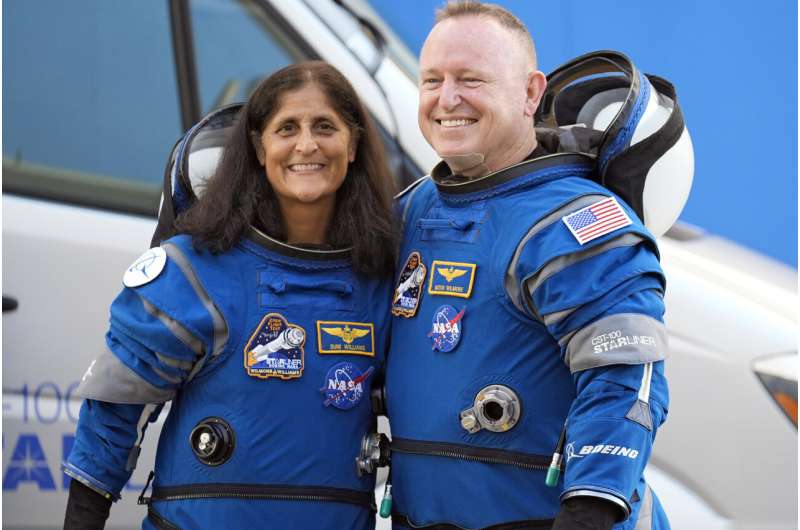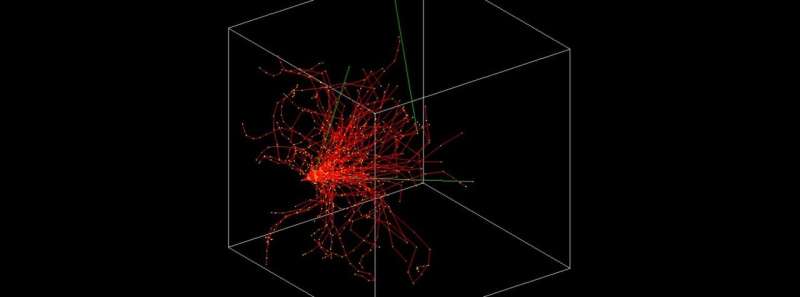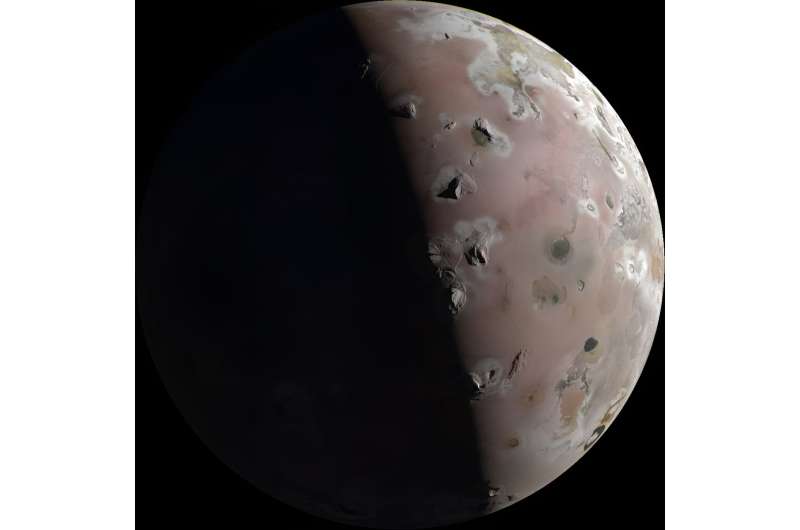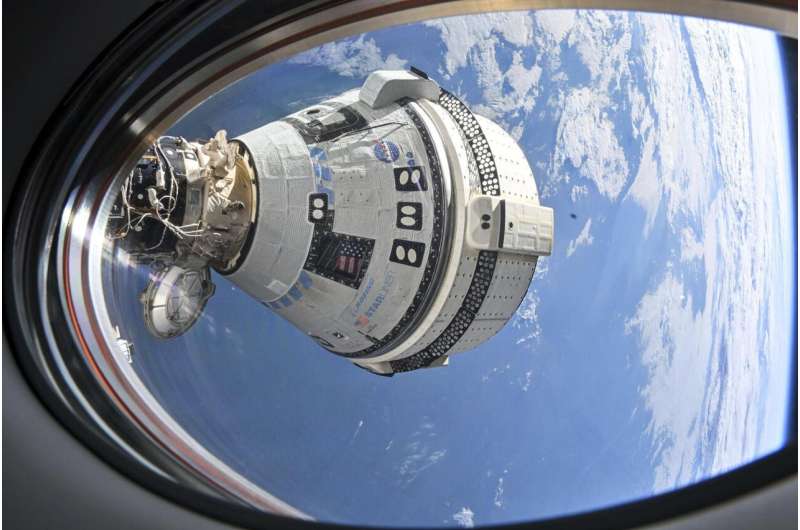SpaceWERX awards contracts to nine space tech firms for defense projects
Friday, 23 August 2024 20:22

Supreme Court case could affect orbital debris mitigation rules
Friday, 23 August 2024 19:29

RFA pushes maiden flight to 2025 after launchpad explosion
Friday, 23 August 2024 18:40

Could 2 NASA astronauts be stuck at the space station until next year? A decision is imminent
Friday, 23 August 2024 17:10
Will two NASA astronauts return to Earth soon in their troubled Boeing capsule? Or wait at the International Space Station for a ride home next year with SpaceX?
NASA has been wrestling with that decision ever since Butch Wilmore and Suni Williams arrived at the orbiting lab in early June on what was supposed to be a weeklong test flight.
Researchers identify effective materials for protecting astronauts from harmful cosmic radiation on Mars
Friday, 23 August 2024 15:05
Researchers have identified specific materials, including certain plastics, rubber, and synthetic fibers, as well as Martian soil (regolith), which would effectively protect astronauts by blocking harmful space radiation on Mars. These findings could inform the design of protective habitats and spacesuits, making long-duration Mars missions more feasible. Because Mars lacks Earth's thick atmosphere and magnetic field, astronauts exploring the planet would be exposed to dangerous levels of radiation.
Dimitra Atri, Investigator, Center for Astrophysics and Space Science and Group Leader of the Mars Research Group at NYU Abu Dhabi's Center for Astrophysics and Space Science, and lead author Dionysios Gakis from the University of Patras in Greece, report these new findings in "Modeling the effectiveness of radiation shielding materials for astronaut protection on Mars," appearing in the journal The European Physical Journal Plus.
Comparing two proposed NASA missions to Jupiter's moon Io
Friday, 23 August 2024 14:40
Thanks to NASA's Juno mission to the Jupiter system, we're getting our best looks ever at the gas giant's volcanic moon Io. Even as Juno provides our best views of the moon, it also deepens our existing questions. Only a dedicated mission to Io can answer those questions, and there are two proposed missions.
Io is well-known as the most geologically active world in the solar system, and it's not even close.
Week in images: 19-23 August 2024
Friday, 23 August 2024 12:10
Week in images: 19-23 August 2024
Discover our week through the lens
First views from Juice’s science camera
Friday, 23 August 2024 09:00
Since ESA’s Jupiter Icy Moons Explorer (Juice) flew by the Moon and Earth earlier this week, we’ve seen images from its monitoring cameras and we’ve seen images from its navigation camera. Today we reveal the first images from its scientific camera, JANUS, designed to take detailed, high-resolution photos of Jupiter and its icy moons.
Sentinel-2C sealed in the Vega rocket fairing
Friday, 23 August 2024 08:23
As preparations continue to launch the Copernicus Sentinel-2C satellite on 4 September, the team at Europe’s Spaceport in Kourou, French Guiana, has bid farewell to their precious satellite as it was sealed from view within the Vega rocket fairing.
NASA will decide Saturday if Boeing's new capsule is safe enough to fly 2 astronauts back from space
Friday, 23 August 2024 06:40
NASA said Thursday it will decide this weekend whether Boeing's new capsule is safe enough to return two astronauts from the International Space Station, where they've been waiting since June.
HySpex Payloads Successfully Complete Key Diurnal Stratospheric Flight
Friday, 23 August 2024 04:30 Sceye, an aerospace company known for its expertise in material science and High-Altitude Platform Systems (HAPS), has announced the successful completion of a diurnal stratospheric flight, marking an important milestone toward achieving long-duration solar-powered flights.
The HAPS, launched from Sceye's New Mexico facility on August 15th at 7:36 AM MST, landed the next day at 12:21 PM MS
Sceye, an aerospace company known for its expertise in material science and High-Altitude Platform Systems (HAPS), has announced the successful completion of a diurnal stratospheric flight, marking an important milestone toward achieving long-duration solar-powered flights.
The HAPS, launched from Sceye's New Mexico facility on August 15th at 7:36 AM MST, landed the next day at 12:21 PM MS Potential seen for US-China space relations
Friday, 23 August 2024 04:30 China's recent retrieval of the first-ever samples from the far side of the moon has renewed talks about the possibilities of the United States and China joining in space-based research programs aimed at addressing global challenges, particularly climate change.
"The US and China each have very innovative space programs, and one area, for example, where the US and China could work together
China's recent retrieval of the first-ever samples from the far side of the moon has renewed talks about the possibilities of the United States and China joining in space-based research programs aimed at addressing global challenges, particularly climate change.
"The US and China each have very innovative space programs, and one area, for example, where the US and China could work together AzurX Space Ventures and ICE Back Space Intelligence in Expanding Global Nature Mapping Dataset
Friday, 23 August 2024 04:30 Space Intelligence, a leader in high-precision nature mapping using satellite data, has announced the successful closing of its Series A funding round. This round was spearheaded by new investors AzurX Space Ventures (ASV) and included participation from Intercontinental Exchange, Inc. (NYSE: ICE).
The newly secured funding will be instrumental in expanding Space Intelligence's global fore
Space Intelligence, a leader in high-precision nature mapping using satellite data, has announced the successful closing of its Series A funding round. This round was spearheaded by new investors AzurX Space Ventures (ASV) and included participation from Intercontinental Exchange, Inc. (NYSE: ICE).
The newly secured funding will be instrumental in expanding Space Intelligence's global fore 


 Image:
Ariane 6 blueprint
Image:
Ariane 6 blueprint